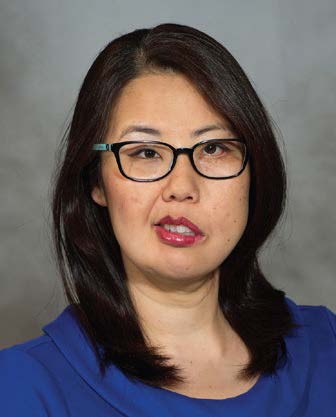"My treatment at Clara Maass was excellent."

Male breast cancer is rare enough that most men don’t even consider it. According to the American Cancer Society, fewer than 1 percent of all breast cancers occur in men. The risk that a female will have breast cancer at some point in her life is one in 8, whereas the risk of male breast cancer is one in 833.
Those statistics make it all the more shocking for men like Louis Graham, 68, a retired IT security analyst for RWJBarnabas Health, who recently discovered that he had the disease.
A decade earlier, the West Orange resident had noticed that his right breast was growing larger. He visited a doctor, who took X-rays, but didn’t believe anything was amiss.
Last December, Louis noticed that his left breast was also enlarged. “It was like I was on steroids. It was so noticeable that the guys at the Y even mentioned it.”
Then he discovered a lump in his left breast. He went to his primary care provider, who ordered a mammogram and ultrasound, followed by biopsies that diagnosed the bilateral breast cancer.

To learn about his treatment options, Louis met with Maria Kowzun, MD, Director of Breast Surgery at the Center for Breast Health and Disease Management at Clara Maass Medical Center (CMMC), who is also affiliated with Rutgers Cancer Institute of New Jersey.
Louis believes she saved his life. “My first question was: ‘How long have I got?’” Louis says. “But she calmed me down. Dr. Kowzun sat down with me and broke down all the steps I would need to go through. I’ve never had a doctor spend that much time with me before.”
Dr. Kowzun ordered an MRI for additional imaging. At that point, Louis decided to go to Aruba on vacation “in case it was my last chance,” he explains. “I’d lost my wife of 46 years the year before, and I was still in mourning.”
Risk Factors
Louis did have several risk factors for the illness: his age (the mean age for male breast cancer is between 60 and 70) and the fact that his mother had breast cancer in her 40s, although she didn’t die until age 84 (15 to 20 percent of men with breast cancer have a family history).
However, Dr. Kowzun notes, Louis’s case was unusual in that he had cancer in both breasts but no genetic mutations, which is usually more common in men who have a hereditary component to their cancer.
Unfortunately, he did have one of the risk factors common to most men with breast cancer: a lack of awareness about breast cancer in males. “One large difference in risk between men and women is that women are recommended for annual screening mammograms as early as the age of 40,” Dr. Kowzun says. “Because of this, they have a good potential to identify an early abnormality and have it treated before it grows. Men don’t receive mammograms, so they often don’t know of the presence of cancer until a lump has formed and the cancer is more advanced.”
Moving Forward
The next step was choosing the best treatment. Treatments for male breast cancer are based on the stage of the cancer and include surgery, radiation, chemotherapy and hormone therapy.
“While treatment options are similar for men and women, men traditionally lean toward surgical mastectomy as opposed to a lumpectomy because they have fewer cosmetic considerations,” Dr. Kowzun explains. Because of RWJBarnabas Health’s partnership with Rutgers Cancer Institute of New Jersey—the state’s only National Cancer Institute-Designated Comprehensive Cancer Center—Louis’s case would be reviewed by multiple specialists with access to the latest treatments if applicable.
Two weeks after she first saw him, Dr. Kowzun performed surgery on Louis. He had a bilateral mastectomy and sentinel lymph node biopsy, in which only a few nodes are removed from each side. Surgery revealed that he had stage 1 breast cancer on both sides, with the left side showing only isolated tumor cells in one lymph node.
Given no further extensive disease, he didn’t require radiation because surgery was considered curative. However, he was prescribed tamoxifen, an antihormonal pill that would reduce his likelihood of recurrence.
“My treatment at Clara Maass was excellent,” Louis says. “There were at least 10 doctors who were consulting on my case. We had a Zoom call, and they all knew me from my years working in the RWJBarnabas Health system. ‘We’re going to take care of you,’ they kept saying. And they did.”
Signs and Risk Factors for Male Breast CancerA change in the size or shape of the breast and a lump in or near the breast are warning signs for male breast cancer. Other warning signs include:
Besides age and family history, risk factors for male breast cancer include:
|
To schedule a cancer screening at Clara Maass Medical Center, call 844-CANCERNJ.